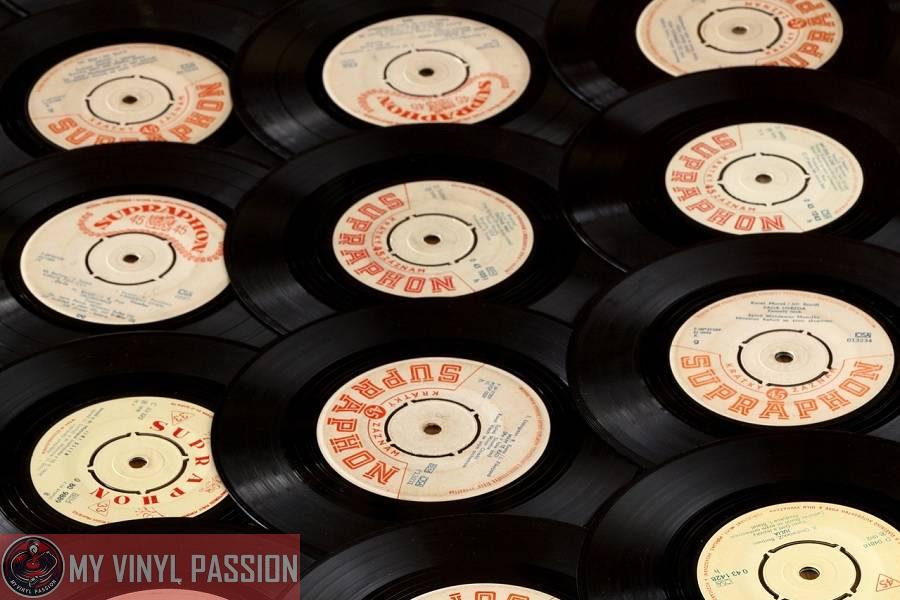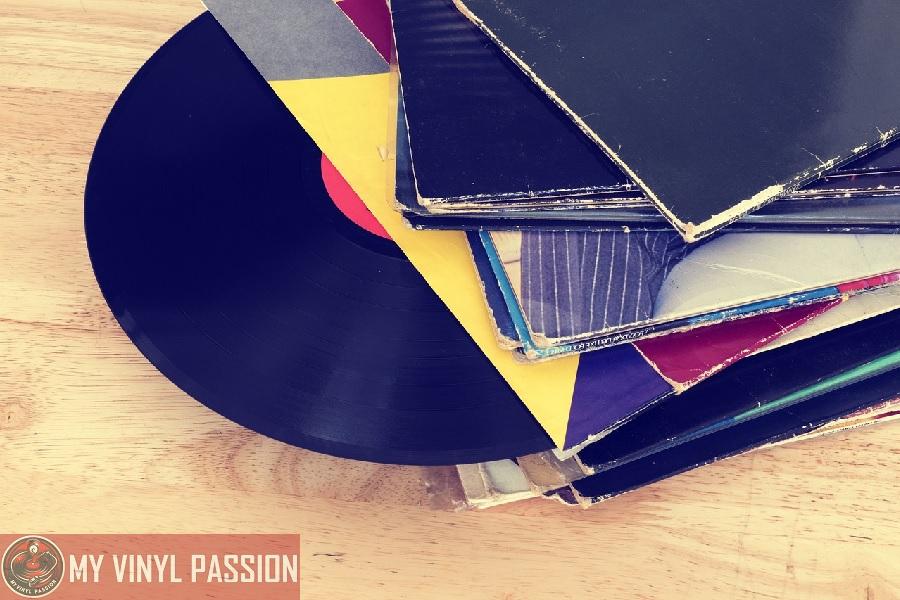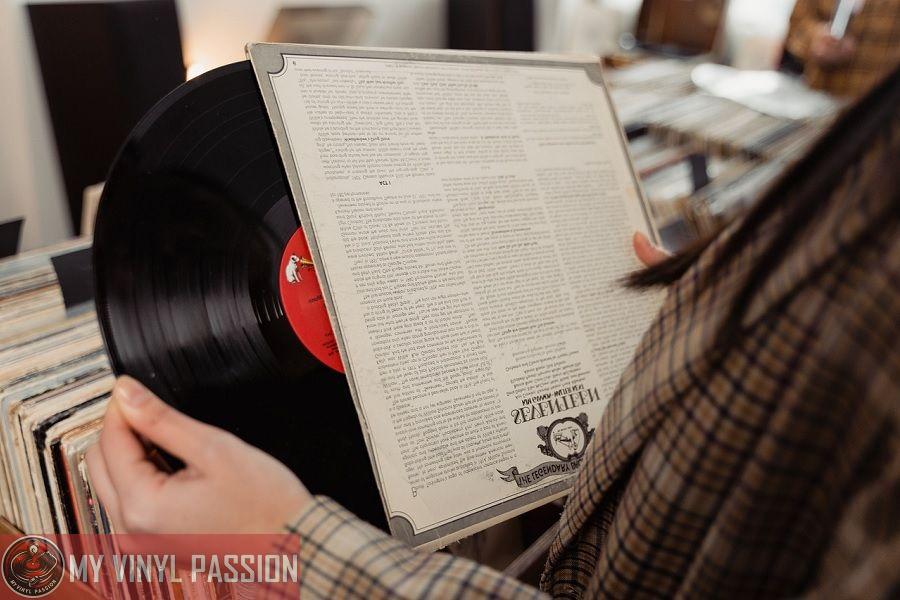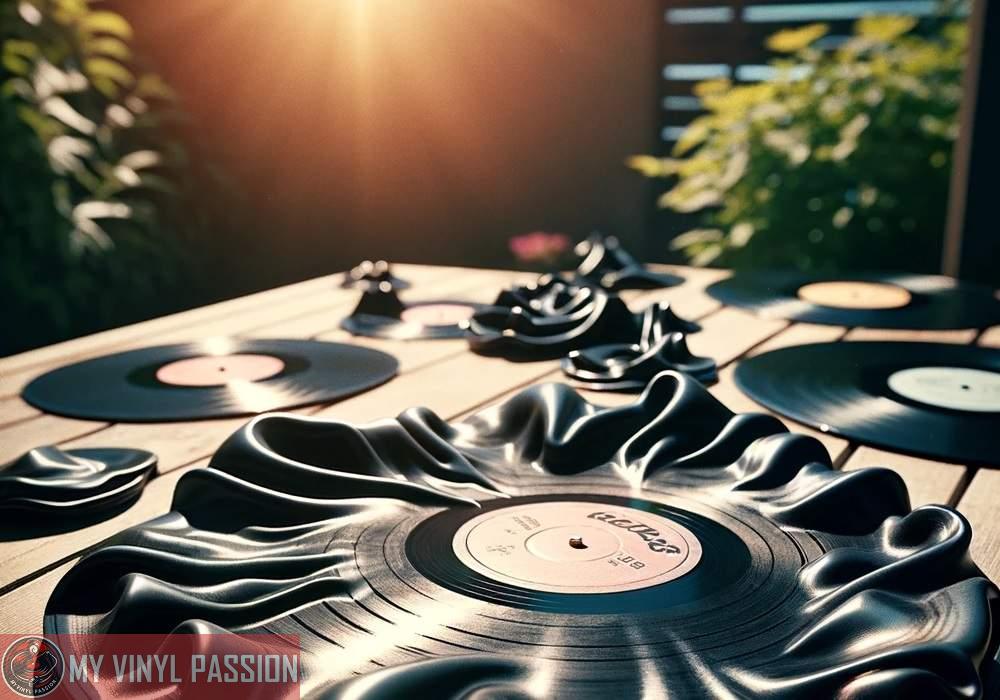Vinyl records have long been celebrated for their rich sound quality and tangible connection to music history.
When considering the capacity of vinyl to hold music, the traditional LP (long-playing) record typically contains up to 22 minutes of music per side at a standard speed of 33 1/3 revolutions per minute (RPM).
This means that a standard LP can hold approximately 44 minutes of audio in total. The exact amount of music a vinyl can hold, however, is influenced by factors such as the record’s size, the speed at which it spins, and the grooves’ width and spacing.
In Summary
A standard 12-inch vinyl record can typically hold up to 22 minutes of music per side at 33 1/3 RPM.
Increasing the amount of music on a vinyl record can compromise sound quality due to narrower grooves and reduced dynamics.
7-inch singles usually hold about 4-5 minutes per side, while a 10-inch record can contain up to 15 minutes per side.
Records spun at 45 RPM can hold less music than those at 33 1/3 RPM, but often have better sound quality due to wider groove spacing.
In the world of vinyl, there are variations such as the 45 RPM records, which are smaller in diameter and often contain a single song per side, and the 78 RPM records, which are made of shellac and have a much shorter playing time.
The 12-inch 45 RPM records, which are usually used for maxi-singles, allow for extended versions of songs and can hold more music without compromising sound quality as compared to the 7-inch singles.
Your choice of vinyl not only depends on your preference for music format but also on the quality of sound you are seeking. Collectors and audiophiles typically opt for standard LPs to enjoy full albums and higher fidelity sound.
Understanding Vinyl Record Formats
When you explore the world of vinyl records, you’ll discover a variety of formats differentiated by size, speed, and content. Each serves a distinct purpose, catering to different amounts of music and audio clarity.
Variations in Vinyl Sizes and Speeds
- 12-inch Records: The standard for most LPs (Long Play), these records give you approximately 22 minutes of music per side at 33 1/3 rpm (revolutions per minute). They can also be played at 45 rpm, which is commonly used for EPs (Extended Play) allowing for higher audio fidelity but less playtime.
- 7-inch Records: Usually recognized as singles, these provide about 4-5 minutes per side at 45 rpm, making them perfect for individual tracks or small collections of songs.
- 10-inch Vinyl: These are less common but serve as a middle ground between 12-inch and 7-inch records. At 78 rpm, they were a standard before the LP was introduced but now are often used for special EP releases or unique collector items.
Comparing LPs, EPs, and Singles
- LPs: An LP, or Long Play record, typically holds a full album’s worth of music. Your average 12-inch LP provides a rich listening experience with up to around 22 minutes per side at 33 1/3 rpm, combining quality and quantity.
- EPs: Generally contain more music than a single but less than an LP. They can be on either 12-inch records at 45 rpm for a higher quality sound or on smaller formats like a 10-inch vinyl.
- Singles: These often come on 7-inch vinyl and hold one song on each side. The focus is on individual hit tracks rather than a collection of works, maximizing the song’s audio quality at 45 rpm.
In your vinyl journey, understanding these formats will greatly enhance how you select and appreciate your record collection.
Technical Specifications of Vinyl Records
Vinyl records are a format defined by their physical characteristics and limitations, each affecting the sound quality and the amount of music they can hold. Understanding these specifications is crucial for your appreciation of vinyl as a medium for high-fidelity audio.
Groove Characteristics
The grooves on a vinyl record are the core aspect that determines sound reproduction. Their unique groove width, spacing, and size are essential for achieving the desired fidelity. You’ll find that each record has a spiral groove cut into its surface to guide the needle of the turntable.
The standard playback speeds are 33 1/3 RPM for LP (long-playing) albums and 45 RPM for singles, which affect the groove spacing:
- LP (Long Playing) Records: At 33 1/3 RPM, groove spacing is finer, allowing more music to fit but potentially reducing dynamic range.
- Singles: At 45 RPM, groove spacing is wider, which can enhance sound fidelity since there is more room for nuanced physical representation of the audio waveform.
A balance between the dynamic range, which is the contrast between the loudest and softest sounds, and distortion levels is maintained by the precise cutting of grooves.
Physical Attributes and Limitations
The diameter and physical limitations of a vinyl record directly influence how much music it can hold. Typically, you’ll encounter two main sizes:
- 12-inch Records: Often have up to 22 minutes per side.
- 7-inch Records: Generally contain up to 5 minutes per side at 45 RPM.
The groove size and width vary between different types of vinyl, with the microgroove being prominent in the LP format, allowing more grooves per inch—this equates to longer playback time without sacrificing too much quality. However, there’s a limit to how much can be squeezed onto a side without loss of quality.
| Record Diameter | Groove Width | Playing Time |
|---|---|---|
| 12 inches | Microgroove (~0.0006″) | Up to 22 minutes per side |
| 7 inches | Standard (varies) | Up to 5 minutes per side |
The physical nature of the medium means that as the needle gets closer to the center of the record, it can encounter more distortion and reduced fidelity, due to the decreased linear velocity of the groove under the stylus.
This is why your speakers might experience a slight reduction in sound quality towards the end of a record. But with a well-manufactured record and a properly calibrated turntable, these limitations can be minimized to preserve the integrity of the sound reproduction.
Vinyl Capacity and Playback Duration
When considering vinyl records, your primary concern is often how much music they can hold. This capacity is measured in terms of playtime, which varies by record type and is influenced by several technical parameters.
Average Playtime Based on Record Type
- LP (Long Play): Typically, an LP is 12 inches in diameter and spins at 33 1/3 RPM. These records usually hold about 22 minutes of music per side, giving you a total of approximately 44 minutes of playtime for a single album.
- EP (Extended Play): An EP often comes in a 12-inch format but is played at 45 RPM or sometimes a 7-inch format spinning at 33 1/3 RPM. This type holds roughly 15 to 20 minutes of music and is traditionally used for singles or a smaller collection of songs.
- Single: A single is usually a 7-inch record played at 45 RPM containing one song per side, with each song typically lasting around 5 minutes.
Factors Influencing Vinyl Capacity
Several factors will determine the exact amount of music a vinyl record can accommodate:
- Groove Width: Wider grooves can enhance sound quality, but they take up more space, thus reducing the number of tracks that can fit on the record.
- Speed: Records spinning at a higher RPM will have a shorter playing time due to the grooves passing the needle more quickly.
- Song Length: The duration and number of songs you want on your vinyl will directly impact whether the content fits on a single LP or requires additional discs.
Remember, while these are average figures, the actual capacity and playtime can be affected by the specific choices made during the vinyl’s mastering process.
Vinyl Versus Digital Formats
When comparing vinyl to digital formats, you’ll find distinct differences in sound quality and listening experience, alongside variations in market trends and behaviors among collectors.
Sound Quality and Listening Experience
Vinyl records are often praised for their warm sound, which many audio enthusiasts argue contains a depth and richness that digital formats struggle to replicate.
The analog nature of a vinyl record means that it captures the full waveforms of audio, leading to a listening experience that some describe as more authentic or true to the original recording.
In contrast, CDs and digital formats involve a conversion process that can sometimes result in a loss of these fine details, although digital formats offer a balance of convenience and clarity that appeals to a wide audience.
Market Trends and Collector Behavior
The market for vinyl has seen a resurgence, with manufacturers and labels catering to collectors who value the tangible aspects of owning full-length albums. Collectors often seek out vinyl for its aesthetic, historical value, and for the experience of playing a record.
Digital formats offer immediacy and portability, vastly different from the deliberate ritual of playing a vinyl record, which may involve the use of specialized equipment for the optimal audio experience.
This difference has shaped distinct trends in music consumption, where digital formats dominate mainstream listening habits, while vinyl remains a cherished format among audiophiles and collectors.
Caring for Vinyl for Best Performance
To extract the finest sound quality from your vinyl records, proper care is crucial. This ensures not only a superior listening experience but also the longevity of your precious analog recordings.
Proper Handling and Maintenance
When you handle your vinyl records, always hold them by the edges to avoid contaminating the grooves with oils and dirt from your fingers. Dirt and oils can cause skipping and degrade sound quality.
To maintain the records, use a soft, anti-static brush before and after playing. For deeper cleaning, consider a record cleaning solution—but never use household cleaners or alcohol.
Daily Maintenance:
- Use a soft, anti-static brush before each play.
- Store records vertically in a cool, dry place, away from direct sunlight.
Deep Cleaning:
- Apply a record cleaning solution with a microfiber cloth or use a record-cleaning machine designed for this purpose.
Optimizing Playback Equipment
Your turntable or record player is the heart of your vinyl listening setup. Make sure the playback equipment is optimized for the best performance. Audiophiles know that a well-calibrated turntable is key to experiencing the unique aspect of analog sound.
Regularly check the stylus for wear and alignment, as a damaged or improperly aligned stylus can harm your records and affect audio fidelity.
Turntable Setup:
- Ensure the stylus is in good condition and replace it when necessary.
- Keep the turntable on a stable surface to reduce unwanted vibrations.
Sound Optimization:
- Adjust the tracking force and anti-skating settings as recommended by the turntable manufacturer or a professional mastering engineer.
Mindful of the physical limitations and capacity of vinyl records, the proper handling, maintenance, and optimal equipment settings are essential for maintaining the high-fidelity sound and the overall listening experience that vinyl is renowned for.
FAQs
How many minutes of music can a standard 12-inch vinyl record hold?
A standard 12-inch vinyl at 33 1/3 RPM typically holds up to 22 minutes of music per side, totaling around 44 minutes for both sides.
Does playing speed affect how much music a vinyl can hold?
Yes, the playing speed affects capacity. A record played at 45 RPM holds less music than one at 33 1/3 RPM due to wider groove spacing, which offers better sound quality.
Can I fit more music on a vinyl record without losing quality?
Increasing the amount of music on a vinyl record often leads to a compromise in sound quality, as it requires narrower grooves and can reduce the dynamic range.
What is the music capacity of a 7-inch single vinyl record?
A 7-inch single, typically played at 45 RPM, can hold about 4-5 minutes of music per side.
Are there vinyl records with different capacities than the standard sizes?
Yes, besides the standard 12-inch and 7-inch records, there are 10-inch records which can hold up to 15 minutes of music per side, and other less common formats with varying capacities.





